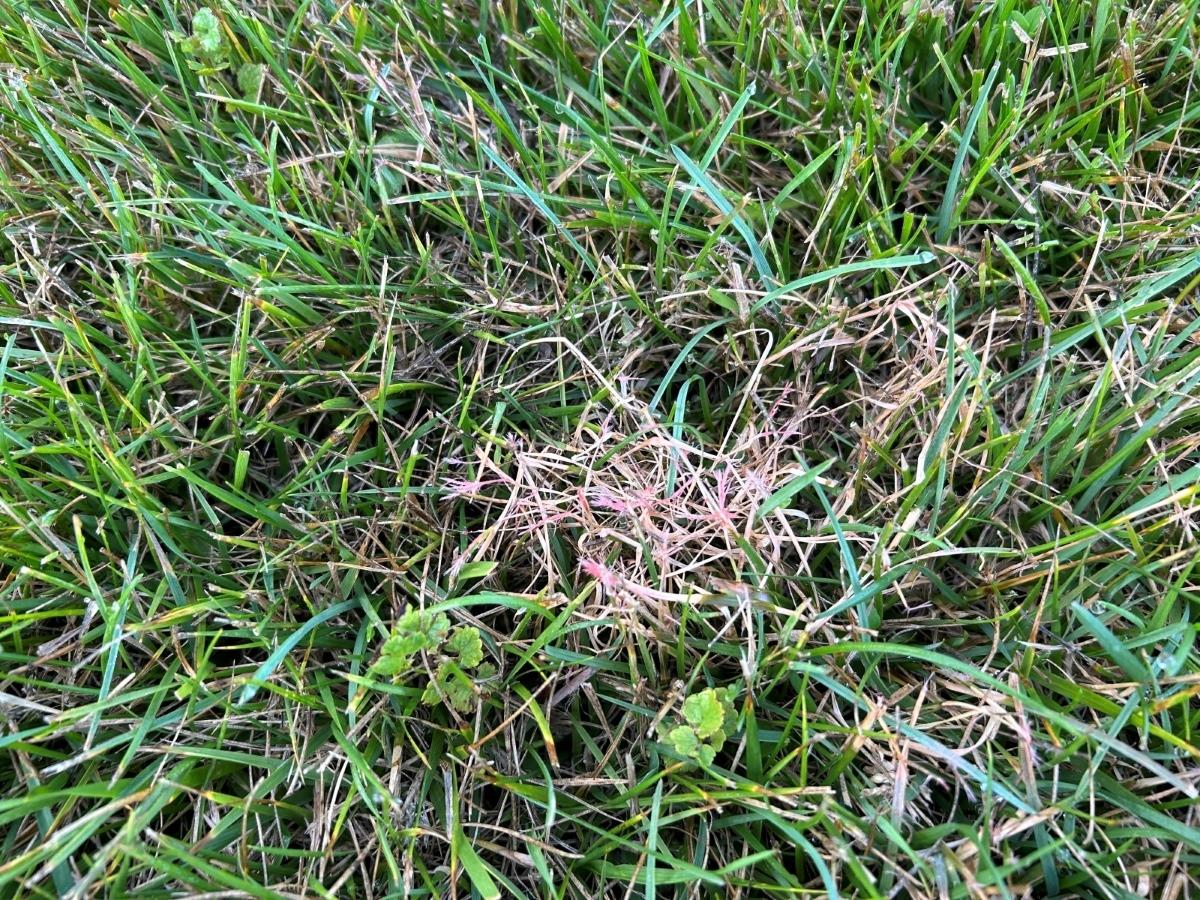Red thread is a common disease on turf during cool wet weather in the spring and fall. Turfgrasses affected include tall fescue, fine fescue, ryegrass, and to a lesser extent Kentucky bluegrass and Bermuda grass.
Primary symptoms
Red thread will produce, under optimum conditions of wet cool weather, a reddish gelatinous fungal growth that can be seen on leaf blades and sheaths. When the leaves dry the fungal growth becomes a paler pink or red and extends from the leaf tips as hard brittle strands. These strands fall into the soil or thatch layer to serve as resting structures for the next infection period. Infected turf has circular to irregularly shaped patches ranging from 2 inches to 3 feet in diameter with a straw-brown or pinkish tan color. Red thread appears most frequently in early spring and fall and occasionally during the summer under prolonged rainy cool periods.
Management
These diseases are more damaging on under-fertilized turf. Often an application of fertilizer will alleviate disease severity. However excessive fertilizer use can cause increased disease susceptibility. Follow UME's Lawn Fertilizer Schedule (chart) for turfgrass fertilization schedules. Select resistant turfgrass cultivars for the establishment of turf.
